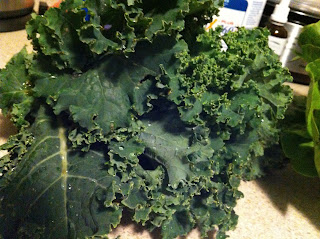First do no harm - it's a tenet, a guiding principle of practice that is of the utmost importance to all medical professionals. Without a doubt, the vast majority of doctors don't intend to harm. However, there are many ways to interpret this guideline. The "do no harm" part is quite clear, but what about "first"?

As a Naturopathic Doctor, to me first do no harm means choosing a first-line treatment that is the least invasive, has the least side effects and potential for harm, while also being effective. So, for example, I will often use dietary/lifestyle/nutrient treatments before recommending acupuncture or herbs. Although acupuncture and herbs are natural, they can have unwanted effects, and therefore, they are not always a first choice for me.
Where am I going with all of this? It truly saddens me that I have patients coming in on multiple medications when a simple vitamin supplement and perhaps a diet adjustment, and a herb or two would have sufficed. Not only did they not receive what the body really needs, what it's really asking for by showing them those symptoms, but now it has also been harmed by a medication that was perhaps not necessary. I say harmed, because almost all medications do harm. They are often hard on the liver, taxing/stressing it, and they often work against the body's natural functions, suppressing them instead of working with them towards cure/better health. Yes, they give us "desired effects" but at what cost?
One of the best scenarios that I can give to illustrate this point is migraine prevention. It has been well-researched that vitamin B2 (riboflavin), magnesium, vitamin B12, and coQ10 have superb migraine-prevention qualities, and can both reduce the frequency and intensity of migraines. There is some research on vitamin B3 (niacin)'s success when taken at the onset of acute attacks. The herbs Tanacetum parthenium (feverfew) and Petasites hybridus (butterbur) have also been extensively researched for their migraine preventing properties.
Rarely, my clients' MDs have recommended vitamin treatment first. When it does happen, it's fantastic, and something I wish more MDs would do! Unfortunately, much more commonly, my clients come in on medications for migraine prevention. So, instead of correcting a simple deficiency, people are instead put on the beta blockers propanolol or timolol (usually used for high blood pressure) or the anti-seizure medication divalproex or topiramate.
These are not benign medications. Beta blockers have a side effect profile that includes fatigue and lethargy, depression, memory loss, vivid dreams/nightmares, dizziness/lightheadedness upon standing, reduced exercise capacity, cold hands and feet, asthma, decreased heart function, gastrointestinal problems, and sexual dysfunction.
Many of the potential side effects of anti-seizure medication are even more alarming: tingling sensation in arms and legs, weight loss or gain, nausea and vomiting, diarrhea, cramps, hair loss, dizziness, sleepiness, blurred vision, pancreatitis (inflammation of the pancreas), and liver damage.
As an aside, I was told by one of my McMaster professors that there is no such thing as side effects. All of the effects of drugs occur because of their mechanism of action. The only difference is whether they are wanted effects or unwanted effects. Just something to think about ;)
Furthermore, in addition to these side effects, these medications also deplete the body of vital vitamins and minerals. Beta blockers deplete the body of coQ10 by interfering with coQ10's production in the body, which is quite paradoxical, as correcting a coQ10 deficiency/insufficiency aids in migraine prevention. So, what do you think happens when coQ10 is depleted in a migraine sufferer? The underlying problem can get worse while the medication masks what is really going on inside the body. This problem is in addition to putting people at a greater risk of heart failure as a result of coQ10 deficiency.
Additionally, melatonin levels may be decreased, leading to sleeping problems because of the beta blockers blocking the adrenergic beta1 receptors, which may inhibit the release of the enzyme serotonin-N-acetyltransferase. This enzyme is responsible for the synthesis of melatonin from serotonin, so when it is lacking, melatonin levels may drop, leading to insomnia.
Topamax (topiramate) also leads to nutrient depletion, specifically affecting vitamin B12 by reducing its absorption when used long-term. As mentioned above, vitamin B12 insufficiency can also be causal in migraine pathogenesis, so again, this medication may further exacerbate the underlying cause of migraines in some people.
This post may sound like I'm 100% anti-medication, but it's not true. Despite my feelings about medications, I do believe that many are great discoveries and can help people get their quality of life back. For many people, migraines can be absolutely debilitating, and if they can take something that will relieve their suffering, I'm all for it.
What I'm not all for is using it as a first-line treatment, a first choice. I wish diet, lifestyle, vitamins, minerals, nutrients, homeopathics, herbs, and acupuncture would be used prior to recommending something that can have such a serious impact on our bodies. If none of these things work, then I think it's great that we have medications as a last resort. It's just upsetting when it's the opposite: a patient is told to give acupuncture or vitamins a shot as a last ditch effort after maxing out their dosage of Topamax...
That's really
backwards, isn't it? How did vitamins become a last resort? Shouldn't they be tried first?
What do you think? I'd love to hear your thoughts! Leave a comment below!












































